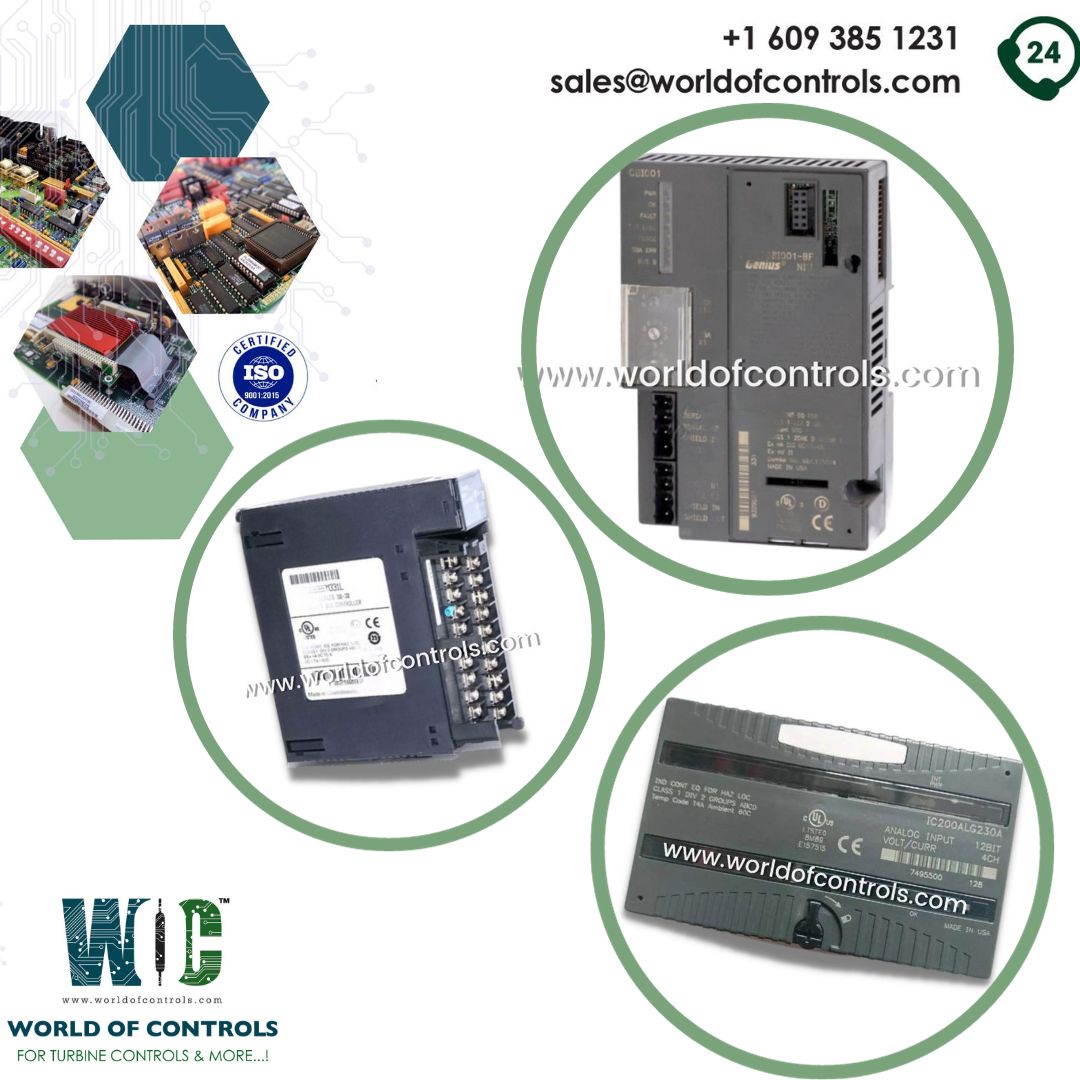GE Speedtronic Mark II PLC Features
- Before the advent of PLCs, industrial automation relied on complex, hard-wired relay control systems. These systems were cumbersome, requiring extensive wiring and substantial control-panel space to implement even rudimentary automation tasks.
- In fact, thousands of relays were often necessary to automate basic factory processes, with no flexibility for configuring logical circuits.
- Just as microprocessors transformed the world of computers, PLCs underwent a technological revolution. Modern PLCs are more powerful, robust, and capable of operating reliably in harsh industrial environments. They offer a wide range of control functions, including calculations, timing, comparisons, counting, and processing of various discrete and analog signals.
- They are equipped with stable operating systems and backup power supplies to ensure uninterrupted process control.
Components of a GE Speedtronic Mark II PLC System
A standard PLC control system comprises five fundamental components:
The Processor
- This solid-state device houses the PLC memory and Central Processing Unit (CPU).
- The CPU, based on microprocessor technology, includes an Arithmetic Logic unit, program memory, process image memory, internal timers, and counters.
- It computes data and performs processing operations by receiving inputs and generating corresponding outputs. It also hosts the operating system, supporting user-defined PLC programs.
Memory
- PLC memory comprises Read Only Memory (ROM) for storing fixed data and operating programs, and Random-Access Memory (RAM) for storing timer values, counters, and information from internal and field devices connected to I/O modules.
Input/Output Modules
- These modules connect the processor to input and output field devices, which can be digital or analog. Input modules transmit signals from input field devices like transmitters, switches, and sensors to the PLC's CPU.
- Output modules facilitate communication with output field devices such as motors, relays, and valves.
Power Supply
- The PLC Power Supply converts AC mains voltage (120/240 VAC) to the DC voltage required to power the primary components of the PLC, excluding input or output field devices.
Programming Device
- Modern PLC programming is facilitated through various devices, including laptops, hand-held devices, or desktop computers, which serve as programming terminals.
- These devices run PLC programming software, allowing users to create custom PLC programs.
PLC Inputs and Outputs
- PLCs, as microprocessor-based digital electronic devices, store user-defined instructions in non-volatile memory to control electromechanical systems and industrial processes.
- Inputs, received via input modules, are processed by the CPU and used, in conjunction with programmed logic, to generate control commands for output devices. PLCs serve as the cornerstone of global industrial automation.
GE Proprietary Communication Protocols
Numerous PLC manufacturers have proprietary communication protocols, and GE is no exception. GE introduced several protocols for its PLCs, allowing them to communicate efficiently. These protocols include:
- CCM (Coprocessing Communication Module): Designed for series 6 PLCs, CCM could be used on EtherNet networks with a gateway controller.
- SNP (Series Ninety Protocol): Introduced with the Fanuc series 90 PLCs, SNP facilitates communication between various series 90 PLCs and other devices. It uses RS-485 and RS-232 for serial communication.
- SNPX: Similar to SNP, SNPX communicates with series 90/30 PLCs over serial lines, offering improved speed over point-to-point lines.
- SRTP (Service Request Transfer Protocol): Developed for PLCs with EtherNet ports, SRTP enables the PLC to act as a client and write to system memory or create responses to read requests.
- Genius: Designed for seamless communication between different series of GE PLCs, Genius utilized the Genius Bus, fostering effective interaction among various GE controllers.
WOC is happy to assist you with any of your Mark II PLC requirements. Please contact us by phone or email for pricing and availability on any parts and repairs.
Frequently Asked Questions
What are the basic hardware components of GE Speedtronic Mark II PLC?
PLC system consists of five primary components: the Processor, Memory, Input/Output Modules, Power Supply, and Programming Device.
What is the role of the Processor in a PLC system?
The Processor is a solid-state device that houses the PLC memory and Central Processing Unit (CPU). It performs data computations and processing operations, hosts the operating system, and supports user-defined PLC programs.
What is the purpose of Input/Output Modules in a PLC system?
Input/Output Modules connect the processor to input and output field devices. They transmit signals from input devices to the CPU and facilitate communication with output devices, allowing the PLC to control various industrial processes.
What are GE's proprietary communication protocols for PLCs?
GE has developed several communication protocols for its PLCs, including CCM (Coprocessing Communication Module), SNP (Series Ninety Protocol), SNPX, SRTP (Service Request Transfer Protocol), and Genius. These protocols enable efficient communication between PLCs and other devices.
